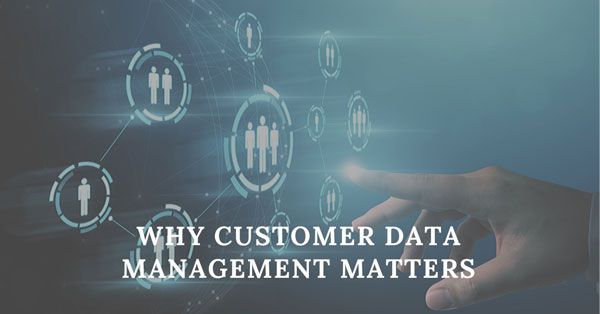Customer Data Management is a tricky thing. It is the process of storing, tracking, and using all of the information collected by a business about its customers. CDM can be really complex for companies, especially e-commerce businesses to communicate with customers across their website, mobile, social media and other channels.
As customers make for the most valuable assets of companies, it becomes imperative to maintain clean customer data. Brands that ignore customer data management can only ignore it at their own peril.
The same principle can be applied to CRM. If the business is not properly studying the interaction between them and their customers than they end up making important decisions based solely on unreliable data.
Challenges with Customer Data Management
When it comes to customer data management, there are a lot of challenges pertaining to it, the major being the nature of the customer itself. A customer is human, and humans aren’t stagnant.
They are unreliable, volatile and unpredictable. This also makes the data collected from customers unreliable, volatile and unpredictable as well.
Some other challenges a company might face are listed below
- Trying to manage all customer data manually
- Using disjointed tools
- Understanding which data has meaning, actionable, or which of it to ignore
- Validating the data
- Keeping data up-to-date, clean and accurate
- Keeping customer data reliable
- Achieving all of these across multiple databases.
Now, to ensure you collect accurate customer data, we have listed some of the best CDM practices just for you.
CDM Best Practices
Adhering to GDPR
For many years businesses have been using poor data collection practices to get sign-ups, registrants and other sorts of customer data. They did this without an iota of an idea as to how they were going to accomplish communication with their leads moving forwards.
GDPR changed that. According to GDPR, you have to document all the personal information that is collected from your customers. You then have to prove that you have consented to get this data. If you don’t, then you have to re-purpose your entire database.
When collecting customer data;
- Be transparent with your prospects
- Keep data organized in such a manner that shows consent from your customers
All of the customer data, whether it is new or old, needs to comply with GDPR. We must be more deliberate and calculated in our approach to data collection.
Monitor Data Integrity, Relevance, and Freshness
We have already mentioned how customer data is volatile. This fact alone makes customer data more challenging to handle. One way to ensure efficient customer data management is to monitor that data for its freshness, relevance, and integrity.
Customer data changes according to the nature and preferences of the customer. It is imperative to keep an eye on this so you can make note of what data is relevant at this very moment.
Try to weed out data that you find to be irrelevant and outdated. Makes sure the data you do manage to collect is at the end of the day factual and correct.
Observe Your Customers Real-Time Behavior
You need to find ways to engage with your customers more to understand how to serve them better. By keeping tabs on your customer’s real-time behavior, you start understanding what their interests are. You can anticipate both their actions and reactions.
Now, if you are an online business, you need to monitor the following things;
- How long a customer is staying on your website
- How were they redirected to your site
- What content hooked them
- What increased the bounce-back rate
You can use tools like google analytics to tap your customer behavior conveniently, thus helping you cater to them better.
Gauge What Interests Your Customers
You need to anticipate the interests and behaviors of your customers closely. You can do so by drawing data that you already have on them. Use existing customer data like demographics, hobbies, interests, purchasing power, and age groups to find ideal customers for whatever it is you are trying to sell.
Try to understand what is that one ‘unique selling proposition’ of your business, and use it to entice customers into buying from your store.
For, E.g., If you are running a fitness store. Ask the following questions:
- What other fitness stores do your customers prefer?
- What online content engages them?
Finding answers to these questions will help you gauge the interest of your customers. Thus, eventually helping you earn their trust.
Gather All Data into One Profile
Organizing your customer data is the crucial step in making sure your customer data is managed properly. So try to gather all of your customer data into one unified profile to avoid confusion and chaos. This will make retrieving the said data much easier when it is eventually needed in the future. If that proves overwhelming to you, then you can opt for outsourcing your customer for online data entry jobs or data entry services to an offshore firm.

Reblog It collaborates closely with clients to develop tailored guest posting strategies that align with their unique goals and target audiences. Their commitment to delivering high-quality, niche-specific content ensures that each guest post not only meets but exceeds the expectations of both clients and the hosting platforms. Connect with us on social media for the latest updates on guest posting trends, outreach strategies, and digital marketing tips. For any types of guest posting services, contact us on reblogit.webmail[at]gmail.com.
